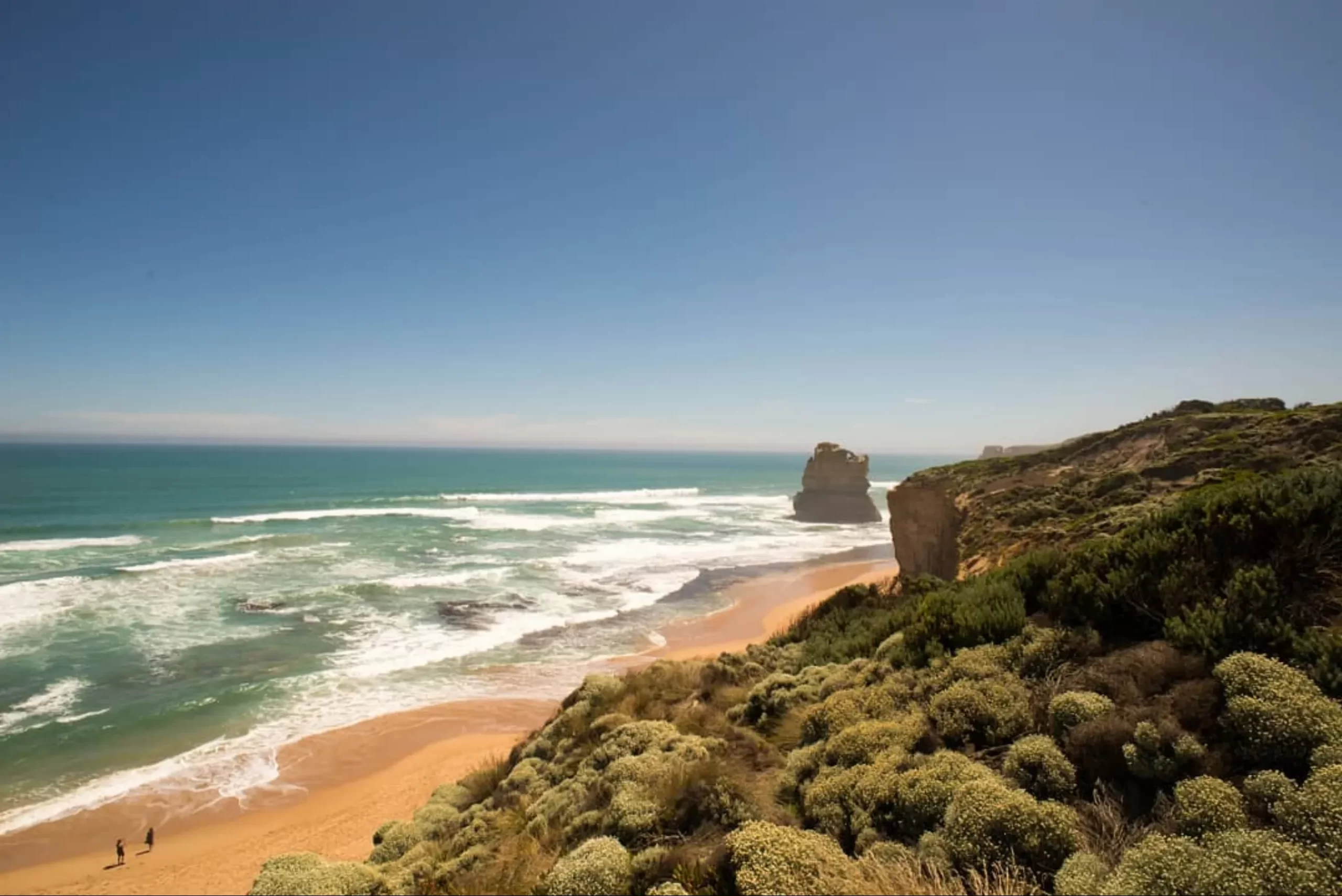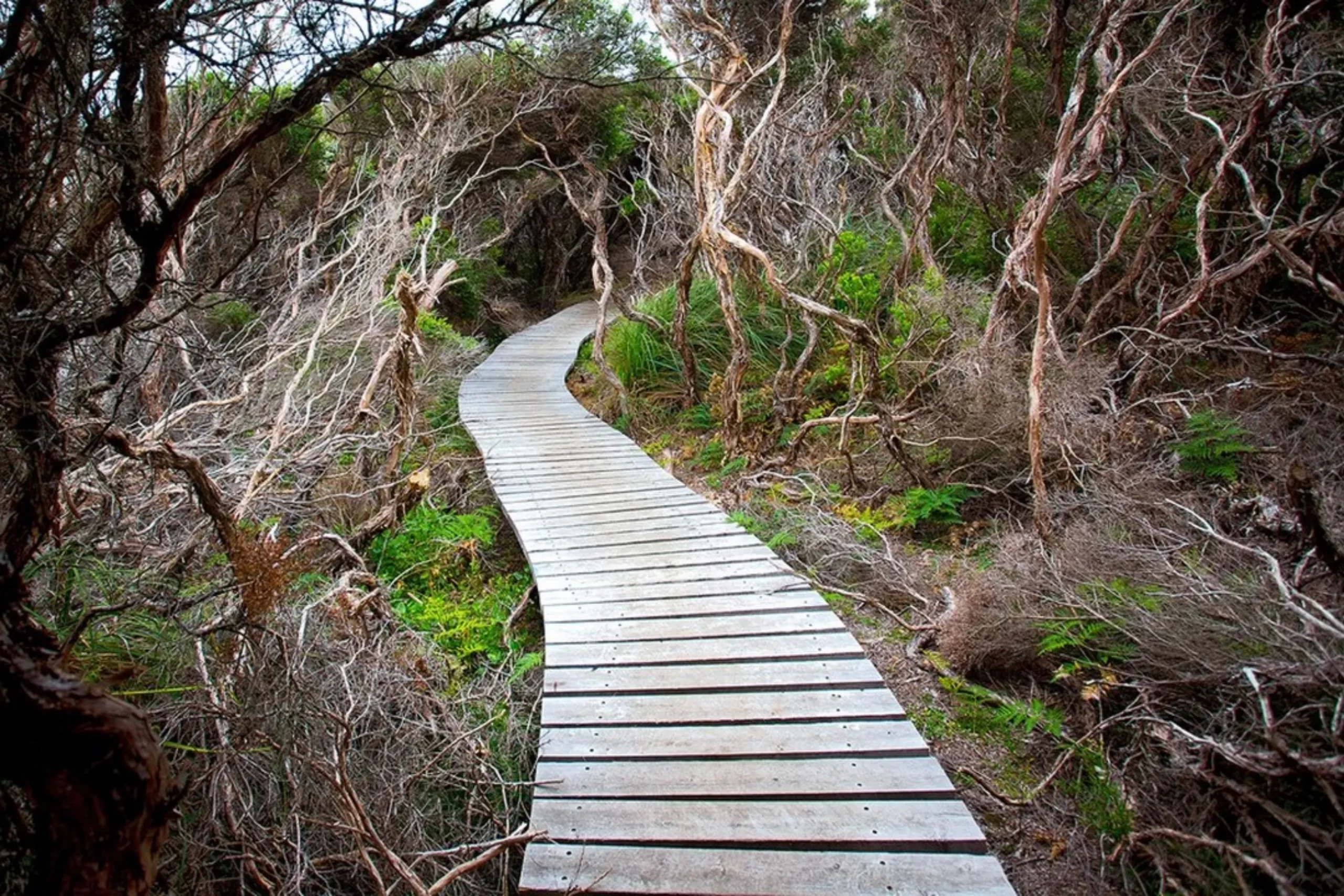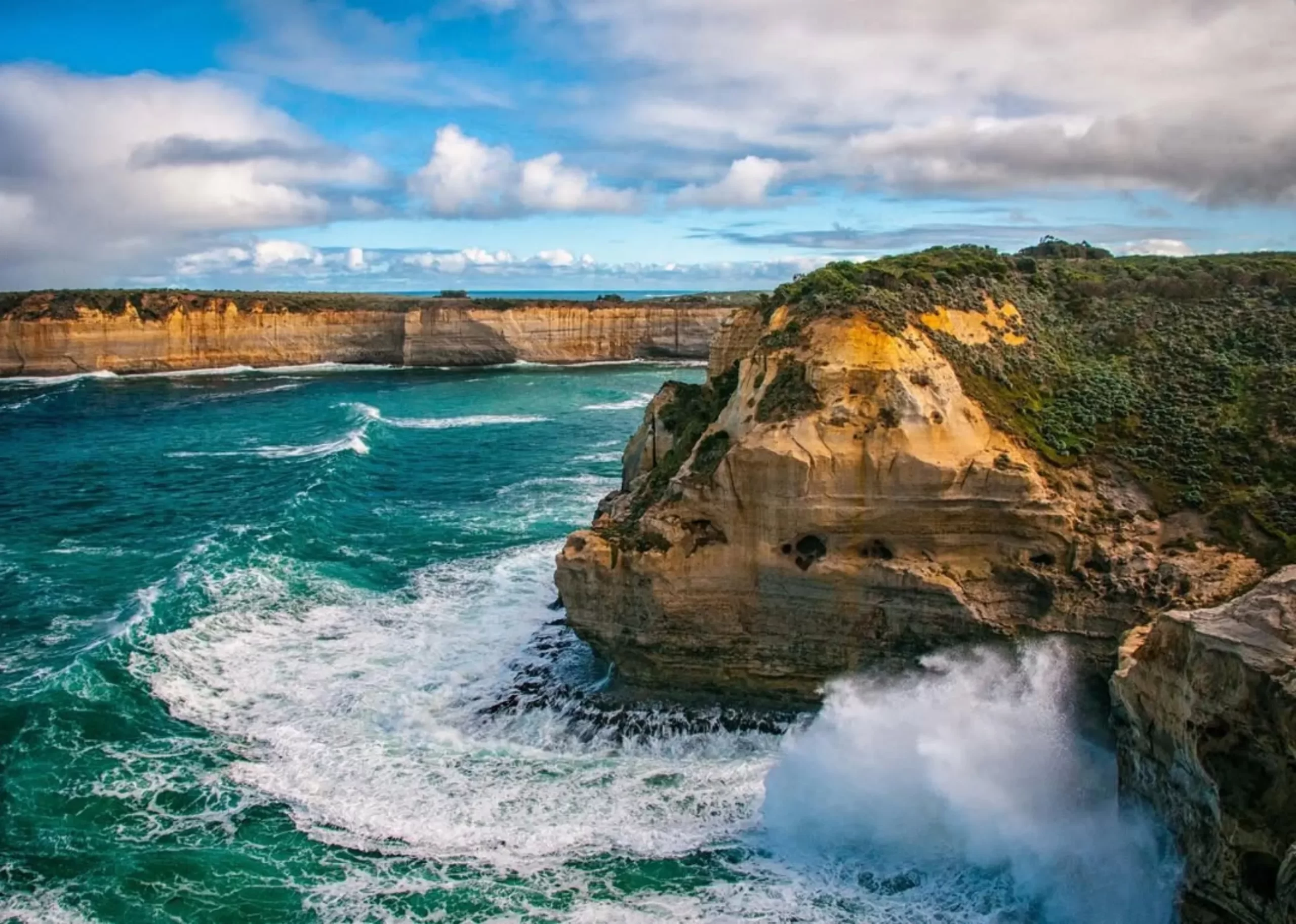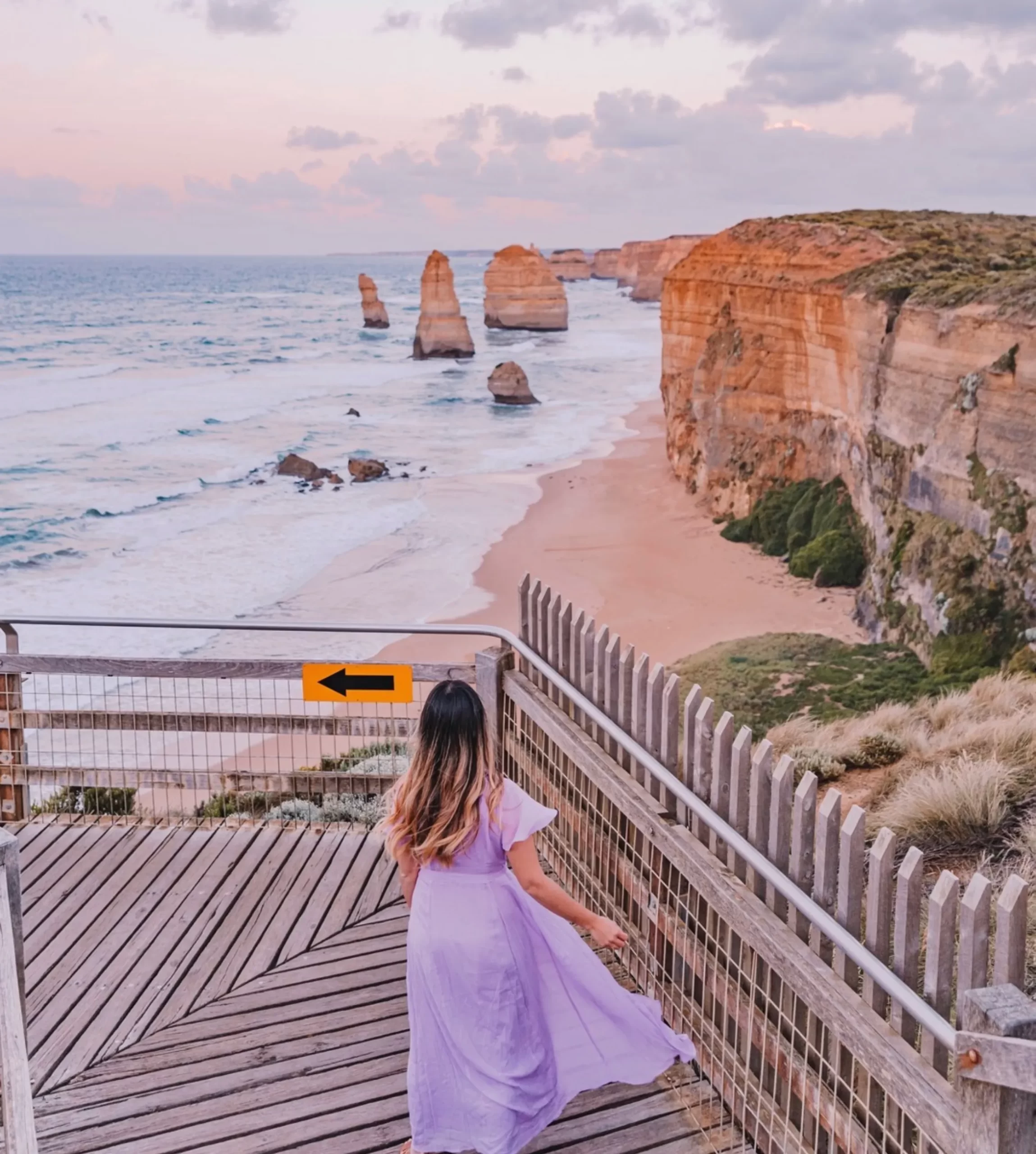The 12 Apostles, a series of towering limestone stacks off Australia’s Great Ocean Road, have been a wonder of the world for years. Rising out of the Southern Ocean, these stacks have been worn down by millennia of erosion, creating steep cliffs and unique formations that attract millions of visitors every year. However, that same erosion is a threat to the longevity of the 12 Apostles, so how long will they stand? This article looks at the environment that shapes the Apostles, the forces at play and what’s being done to protect this popular tourist attraction in Port Campbell National Park.
A Geological History of Coastal Erosion

The 12 Apostles were carved out of the soft limestone cliffs along Australia’s south coast, part of a complex geological landscape. The rock stacks were formed by millions of years of coastal erosion, with waves and wind wearing away the limestone, which is softer and more weathered than other types of rock. The environment of the 12 Apostles is a great example of how rock stacks, cliffs and the surrounding landscape change over time, shaped by wind and wave erosion.
Coastal erosion is an ongoing process that’s reshaping these limestone cliffs. While erosion has created the stacks, it’s also a threat to their stability. Erosion from extreme weather events like big storms and high waves weakens the base of the cliffs, and rocks fall off. This is known as “stack crumble” and has already claimed several of the formations that have been worn away by the Southern Ocean. Geoscience Australia is monitoring these changes, studying the erosion of the limestone cliffs and the geological history of this coastal environment to predict what will happen in the future.
Climate Change and Erosion

Climate change is now a major player in the erosion of the 12 Apostles. Rising sea levels, extreme weather and changing wave conditions are all contributing to faster erosion, especially at the base of the stacks and cliffs. Higher sea levels bring the ocean closer to the cliff base. Stronger storm systems mean bigger and more powerful waves that can cause more stack collapse. The Victorian government recognises the importance of these natural wonders and has put in place some erosion control measures for the cliffs, but erosion control matting and the like are no match for the power of nature.
With the erosion accelerating so fast the time frame to preserve what’s left becomes critical. Experts think some stacks may last decades, others may collapse much sooner due to increased wave and environmental pressure. The presence of extreme weather events associated with climate change makes predictions even harder but scientists and conservationists are monitoring the formations, the waves, the erosion rates and any emerging threats. Their work is key to understanding the geological history of the Apostles and the future of these cultural icons.
Cultural and Archaeological Significance

Beyond their natural beauty, the 12 Apostles have cultural and archaeological significance as part of Australia’s national park heritage sites. They are located within Port Campbell National Park, an area recognised for its natural landscape and archaeological and cultural heritage sites. This coastal environment is home to many archaeological sites that provide a window into the region’s ancient human history and natural wonders, adding to the experience of visiting the 12 Apostles. The Victorian government and local organisations like Geoscience Australia are aware of the importance of these archaeological sites and are undertaking archaeological site maintenance to preserve them for future generations.
Conservation efforts are focused on balancing tourism with preservation, as the site has seen a huge increase in visitors in recent years. As Australian and domestic tourists continue to flock to this iconic spot, managing the impact of high visitor numbers becomes critical. A large viewing platform and huge car park nearby have helped to accommodate visitors while protecting the immediate area. However, responsible tourism practices are still important as increased foot traffic can accelerate erosion from wind and damage the natural habitat. The urban areas around the park have erosion control measures and visitor guidelines in place to protect the fragile limestone landscape.
Tourism and Responsible Viewing
As a cultural and natural heritage site, the 12 Apostles are a key part of Victoria’s tourism, especially with the increase in domestic tourists visiting road trip destinations like Apollo Bay and Aireys Inlet. The visitors are especially noticeable in the late afternoon when the sun sets over the limestone cliffs. This is considered one of the best times to view the rock stacks. The car park and viewing platform nearby provide great vantage points from which to view the site without impacting the environment too much. The Victorian government continues to promote responsible tourism to protect the site, with guidelines to stay within designated viewing areas.
However, with so many tourists, the balance between tourism and conservation is tough. Responsible tourism practices help to reduce the impact of high visitor numbers, prevent erosion of the limestone cliffs and help conserve these cultural heritage sites. Education programs educate visitors on the geology of the area, the effects of erosion, and the importance of conservation so that visitors can understand the environmental pressures on this site. As the Apostles continue to attract visitors, these efforts will help keep the natural environment and cultural landscapes of the area intact.
Conservation and Erosion Control

With the long-term preservation of the 12 Apostles in mind, conservationists are looking at various erosion control measures. The soft limestone that makes up the stacks and cliffs is naturally prone to erosion, but erosion control matting and strategic planting have been used in the surrounding area to stabilise the soil and reduce wind erosion. Geoscience Australia and local researchers are monitoring erosion rates and trialling different methods to slow the process down, but it’s impossible to stop natural erosion completely.
Another part of conservation is the management of cultural environments and archaeological sites within the national park. The 12 Apostles have significance beyond their natural beauty, and as heritage sites, they are preserved to honour the area’s indigenous history, geological formations and archeological site maintenance. The Victorian government, in partnership with local Indigenous groups and conservation organisations, have put in place guidelines to protect these environments from overuse due to high visitor numbers. Erosion control is part of this work, so both natural and cultural heritage sites are protected for future generations.
Time Frames and Projections

Looking ahead scientists think the 12 Apostles will change in ways we can’t predict, some stacks may last for centuries while others will have a shorter life due to rapid erosion. This is part of the geological history of the site which will continue to evolve as wind and wave erosion shapes new formations over time. With more study and conservation maybe new stacks will emerge in the future and current stacks will continue to erode.
Geoscience Australia and others study the area to predict future changes. Conservationists and the Victorian government work to protect the site from immediate threats. For those interested in Australia’s geological history and cultural heritage, the 12 Apostles is a window into the forces of nature that shape our world. It’s a chance to see the beauty of nature and scientific curiosity and think about how we view kangaroos, conservation and preservation and how that shapes our landscapes and heritage sites.
FAQ
What’s causing the 12 Apostles to erode?
The 12 Apostles are eroding due to waves and wind in a dynamic coastal environment. The soft limestone that makes up the stacks is particularly susceptible to erosion, which has shaped and will continue to change these rock stacks.
How does climate change affect the erosion of the 12 Apostles?
Climate change has increased coastal erosion, rising sea levels and more extreme weather events are accelerating the erosion of the cliffs and hence the stack crumbling, shortening the life of some stacks.
Are there any erosion controls in place to protect the 12 Apostles?
Yes the Victorian government has erosion controls in place such as erosion matting and guidelines for responsible tourism to help preserve the area. These controls are to reduce the impact of visitors and protect surrounding cultural heritage sites.
Why are the 12 Apostles cultural and archaeological sites?
The 12 Apostles are part of Port Campbell National Park, which has natural wonders and cultural sites. Conservation is about preserving both the natural and cultural heritage for future generations.
When to visit the 12 Apostles?
Afternoon, especially sunset is the best time to visit the 12 Apostles as the sun casts beautiful shadows on the limestone. Morning is also good for a quieter experience and softer light.